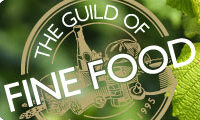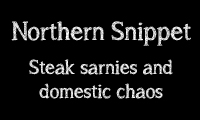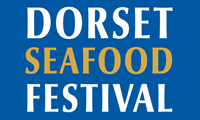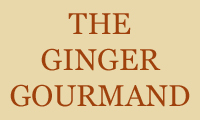|
10/8/2014 0 Comments Mat Follas' taste of IrelandThe Guardian 09 August 2014 TV chef Mat Follas is well-known for producing hearty meals using foraged ingredients. On a trip to Ireland, he finds the country’s ‘natural larder’ is a rich source of inspiration for kindred wild-food enthusiasts Mat Follas enjoying Kinsale’s farmers market. Photograph: Tom Parker My first taste of Murphy’s honeycomb caramel ice cream, in pretty, bustling Killarney, set the tone for a holiday full of edible revelation. Handmade by Sean and Kieran Murphy using local ingredients, including the milk of the rare Kerry cow, its rich flavour and creamy texture was simply superb. And if those little chunks of honeycomb transported me back to my homeland – where the similar hokey-pokey ice cream is practically a national dish – it was a pleasure to open my eyes and find myself back in south-west Ireland. I couldn’t resist a second helping when I got to Dingle, where at the original Murphy’s shop I discovered the divine pairing of lemon curd and gin-and-tonic flavoured ice creams – the gin distilled in Dingle, naturally. The sun hadn’t stopped shining since I left Killarney and already I had sand between my toes: driving west along a road sandwiched between mountains and sea, I hadn’t been able to resist parking up at Inch beach and striding along the vast sands. Dingle has 1,800 residents and 52 places to eat. One of them is Global Village, the award-winning standard bearer for the peninsula’s ever-growing culinary reputation. Its chef-proprietor Martin Bealin took me to visit his favourite shops and suppliers, including Maja Binder’s The Little Cheese Shop. Her handmade Dilliskus, a semi-hard cheese enhanced by the salt and iron of hand-gathered seagrass, bowled me over. That got us talking about seaweed. And soon I was heading to Dingle harbour with Bealin, a kindred wild-food enthusiast who confessed that his restaurant and soon-to-be-opened Dingle Cookery School didn’t leave him much time for foraging. Against the backdrop of Dingle Bay we scoured the sandy shore for wild plants and sea vegetables. My first taste of sea spaghetti lived up to its name – greeny brown strands that were deliciously al dente – and I did a double take when I spied a great bush of purple vetch thriving on the seashore. In this sunny corner of Ireland, warmed by the Gulf Stream, the hedgerows sparkle with bright wild fuchsias. Thanks to Bealin, I now know that if you squeeze these edible flowers you can eke out the clear, honey-sweet nectar known in Ireland as “God’s tears”. On Bealin’s tasting menu that night, a single fuchsia flower balanced perfectly the sweetness of a fresh-from-the-boat turbot fillet. And there was another familiar flavour on the plate: our own foraged sea beet leaves, fried in tempura batter. Gourmet food from ‘nature’s larder’ at Global Village. Photograph: Tom Parker Bealin and his fellow chefs have access to an enviable natural larder: seashore plants, Atlantic seafood, meat slowly reared on the lush grasses. But the other crucial ingredient of Cork and Kerry’s rich food culture is an old-fashioned way of doing things: not because it’s now lucrative to be “local” or “artisan”, but because that’s the way they’ve always done it.
Sally Barnes, of the Woodcock Smokery in Castletownshend, epitomises this approach. A leading light of Ireland’s slow-food movement – which, as an alternative to fast food, aims to promote local, sustainable produce – Barnes uses only wild fish and does everything, from pin-boning to salting and slicing, by hand. The resulting smoked salmon, infused with the scent of smouldering native hardwoods, is exceptional. My diversion to meet her not only justified resting my bones at the glorious Liss Ard country estate, but also took me via Cork’s stunning south-western coastline – and I resolved to come back on my motorbike to ride the Wild Atlantic Way. Food producers such as Barnes, who is passing on her skills to her daughter and granddaughter, are the lifeblood of Cork’s celebrated food towns. Bright and boaty Kinsale, for example, has its Good Food Circle restaurants (and many more great eateries besides), but its brightest jewel is the weekly farmers’ market. There, among the mutton pies and sourdough breads, I made a beeline for the two expatriate Italian chefs cutting fresh beetroot and rocket tagliatelle from their handmade dough. Thirty miles north, in Cork city, I marvelled at the most impressive covered food market I’ve seen in the northern hemisphere. The English Market has been operating since 1788, and what struck me about it, aside from the sheer quality of its local produce, was that it is a real, honest market where workers call in at the end of the day to buy their dinner. At the hub of it all is Kay Harte of the Farmgate Café, whose menu is based exclusively on market produce. She cooked me a perfect plate of sliced lamb’s liver and bacon, but not before I’d squeezed in an appetiser of smoked and pickled fish from Pat O’Connell. He is the fish merchant who reduced the Queen to hoots of delight during the royal visit of 2011. It was a mother-in-law joke that set her off, he said. But I’m sure that the sights, smells and flavours of this bountiful Irish market must have had something to do with it.
0 Comments
Your comment will be posted after it is approved.
Leave a Reply. |
Blog Categories
All 2008 2009 2010 2011 2012 2013 2014 2015 2016 2017 2018 Bramble Cafe & Deli Conde Nast Traveller Food And Travel Magazine Food Judge Foraging Kai We Care Masterchef Mat Follas Olive Magazine The Casterbridge The Guardian The Independent The Telegraph The Times The Wild Garlic Things I've Written YouTube / Vimeo Mat likes ...
|
|
For Mat Follas books and personal appearances, please contact Gidday Ltd
E: [email protected] Company Registration No. 9028088 Registered address: Gidday Ltd, Verulam House, Unit 1 Cropmead, Crewkerne, Somerset TA18 7HQ |
|
|
© 2014 Mat Follas. All rights reserved
|













